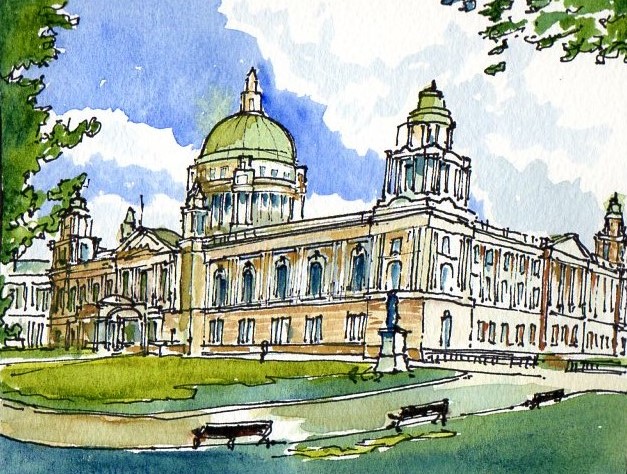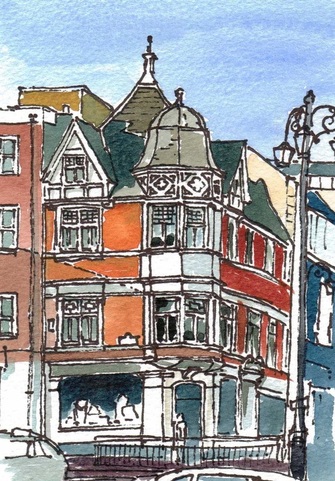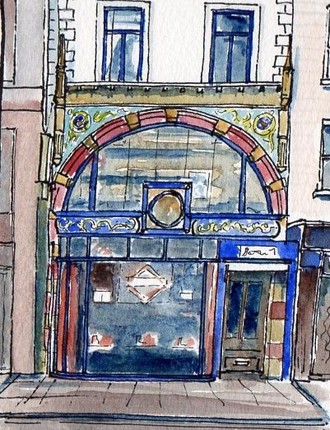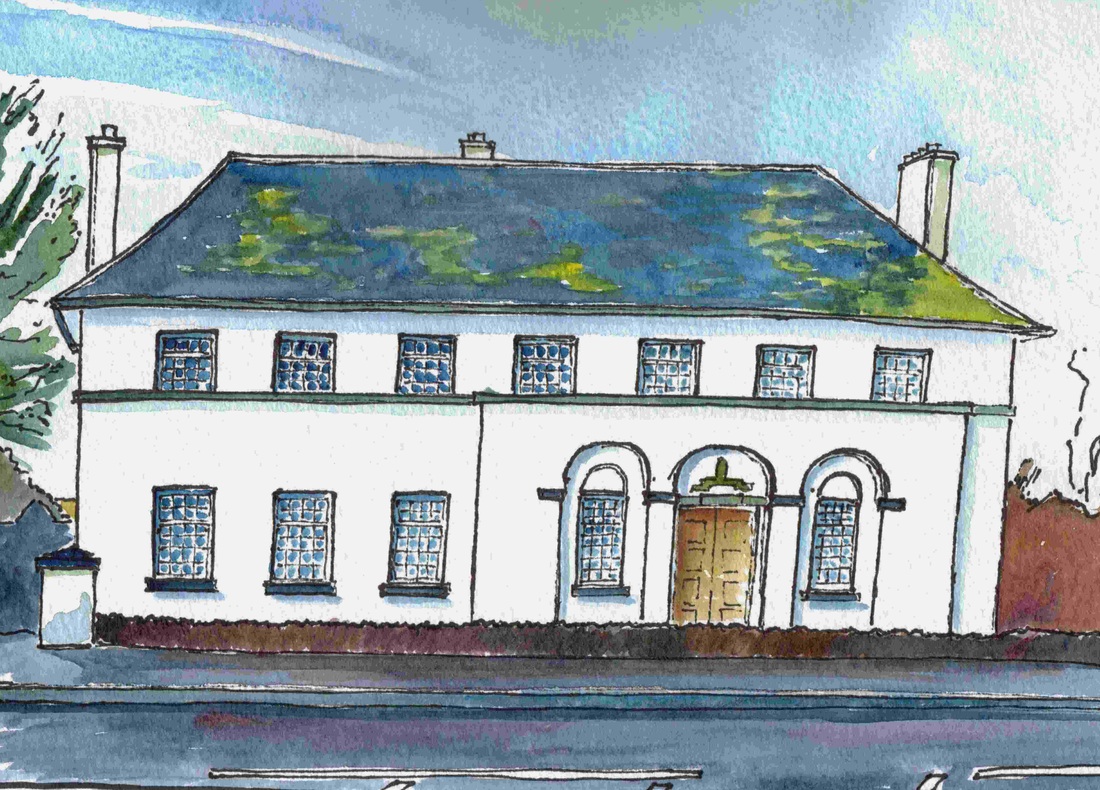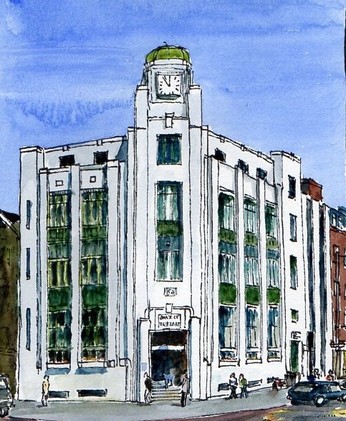Early Twentieth Century
|
The Twentieth Century opened upon a prosperous region. Belfast was at the zenith of its power and was a world leader in shipbuilding, rope making, the linen industry, carbonated water production and cigarette making. Londonderry's shirt industry was also booming. Prosperous and confident times produced prosperous buildings. Belfast City Hall is a classic example of Edwardian grandeur and it exudes Imperial certainty and feels very much part of the wider world of the British Empire. It is surrounded by tall confident buildings mainly from the same period.
Diamond Chambers in the centre of Derry is a good example of Arts and Crafts architecture influenced by the English Domestic Revival . This placed emphasis on detail in reaction to the mass production of the era. It was a popular style for less formal buildings and particularly houses. The former Crimbals' music store in Belfast illustrates that the region was also not immune to the sensibilities of continental Art Nouveau which tried to develop a new aesthetic based upon graceful plant forms. The First World War brought major change, however, with industry diverted to the war effort and the loss of many young lives. The turbulent period afterwards resulted in the partition of the island in 1922 when six of the nine counties of the region were formed into the new administrative region of Northern Ireland. This stayed part of the UK. Standard Neo- Georgian police stations, built all over this region, are the most obvious early symbol of the new area and reflect the conservative character of the period. They display a modern sensibility, in their paired back detail, but are very Georgian in their proportions. They, however, complement the character of many of the area's towns and villages. In Belfast, and to an extent elsewhere, more overtly modernist forms were also adopted during the Inter War period for some cinemas, banks, garages, schools and some housing. The 'Art Deco' style emphasised verticality and the stepping of rectangular forms. Perhaps the best example in the region is the former Bank of Ireland on Belfast's Royal Avenue. |
|
Belfast City Hall, 1906.
Diamond Chambers, Derry, 1901.
Former Crimbals Music Store, Belfast, 1903.
Eglinton Police Station, c.1930.
Bank of Ireland Royal Avenue, Belfast, 1929.
|

